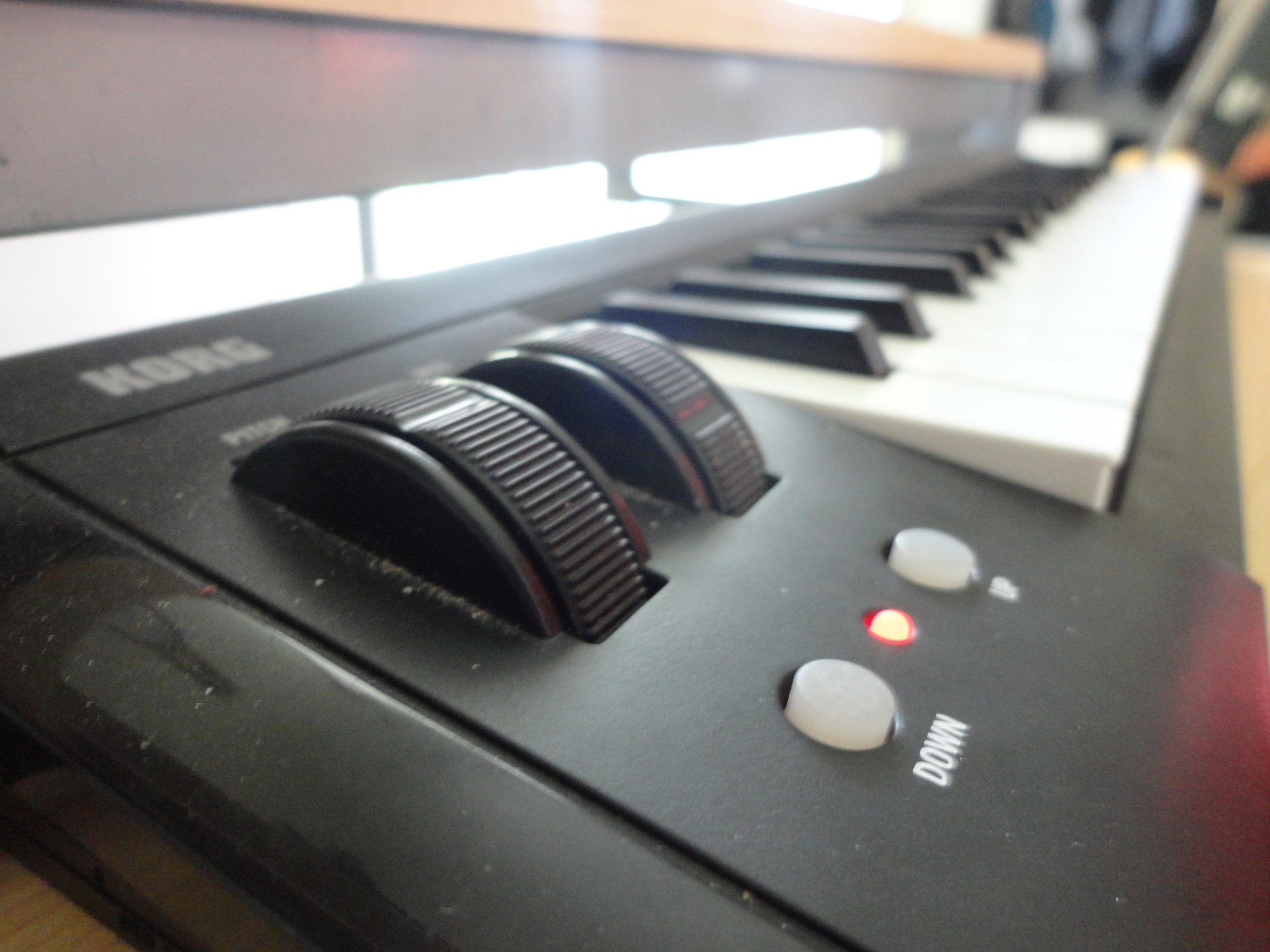-
Posts
6,153 -
Joined
-
Last visited
-
Days Won
53
Content Type
Profiles
Forums
8Tracks
Events
Blogs
Everything posted by timaeus222
-
Sounds awesome! The only thing I don't like is how abrasive that sustained lead is.
-

wip Pokemon Omega Ruby Alpha Sapphire (Remake Music)
timaeus222 replied to A Cloud Called Klaus's topic in Post Your Game ReMixes!
The drums seem too aggressive, but otherwise I think this works. -
At 0:09, there's some sort of abrasive fake guitar, and although it could be interesting, it's rather resonant and it hurts for the entire time it continues (FL Slayer?). Anyways, as this is, it doesn't sound too dubsteppish to me. I can't really classify it. I think the 808 snare gets a tad buried under everything else. This has potential for some cool harmonies though. Keep working on it!
-

OCR02933 - Final Fantasy IV "La Fin de Zeromus"
timaeus222 replied to djpretzel's topic in ReMix Reviews & Comments
Definitely recall this from the WIP forums. This was a pretty fun remix. I guess I would've liked a less sparse break from all that sub bass, but the wubs were nice and varied, and I actually think the drums were beefy enough. I do think though that the mix is bright enough, and that the cymbal is both more lofi than the rest of the mix and a touch too bright, but otherwise this is pretty solid. Oh yeah, isn't "fin" masculine? =P -

Fit Club ahoy! Where men are bros and women are also bros!
timaeus222 replied to OceansAndrew's topic in General Discussion
Yeah! That's an old season of it, called Sasuke. Dude, that's awesome. xD -

Pokémon X/Y and OmegaRuby/AlphaSapphire (Gen6) (3DS)
timaeus222 replied to Mirby's topic in General Discussion
Nice, they kept in the cool items. Still able to break down doors and walk up mini ladder ramp things. -

Fit Club ahoy! Where men are bros and women are also bros!
timaeus222 replied to OceansAndrew's topic in General Discussion
Have you guys tried some -esque stuff? Like ? You should try it if you get the chance. -
OT: - Sounds unhappy and creepy to me.
-
Well, considering this is supposed to be Chillout, I think a few things don't work based on how they don't keep the mood. The PWM lead and the dance kick make it more energetic rather than keep things ambient-like. The lead is too abrasive, while the kick reminds too much of high-energy hip-hop. Perhaps the lead can work if you low pass it so that it sounds more distant, but I think the kick needs to be a different sample. Also, the sustained lead that plays with the tremolo pad is different, but sounds about as abrasive as the other lead, and again sounds not as ambient as the other instrumentation. The FM bell in the breakdown section might benefit from going up an octave, as it seems a bit atonal on this octave and might not seem like something to focus on. Other than that, it's a good take on the source. There are good ideas here, but the things that stick out just need to be pushed down a bit.
-

OCR02931 - Half-Life 2 "I Tried"
timaeus222 replied to djpretzel's topic in ReMix Reviews & Comments
I love all the FM synths populating this excellent soundscape. The textures here are not abrasive, and quite accessible. You never know what's going to happen next, but it's still very much appreciable. Clem's arrangements are always so outgoing, and occasionally out there, but if you had never heard his style before, you'll remember it now! -

OCR02930 - Mega Man X6 & X3 "Shield of Legend"
timaeus222 replied to djpretzel's topic in ReMix Reviews & Comments
Hola, Damage drums. =P I liked the little stereo field nuances in here from the sweeps, panning arps and such. Even with the Heavyocity stuff, it didn't feel quite like the drums were trying to be the star and cover the lower-quality samples up, so that's good. Neat irregular rhythms here and there, and an engaging arrangement that actually had a good sense of direction. -
Not super happy, but it makes me happy hearing some cool chord progressions. It's also energetic. (1:07-long)EDIT: This too.
-

How do you feel towards your own music?
timaeus222 replied to Bejack's topic in Music Composition & Production
Yeah, that's definitely the key here. Your mistakes are much less accessible to people who don't write or mix music (producing is both combined, btw), or even people who just began for a few weeks. Sure, you can put your music up on newgrounds and soundcloud and all that, but just remember that if the person who gave you feedback is someone you don't know, you really can't be sure how objective they actually are, so I wouldn't take feedback on either of those two websites too seriously unless you know the person well enough to have a rough idea of where they are in the music producing process (and even that's hard enough). If someone says a vague comment, like "that sounds cool", "nice", "sounds neat", and so on, it's almost like cooking feedback that says such things as "this tastes delicious", "this has nice flavors", "I like it", and so on ("This is the best [meal name] I've ever had" is a bit of a step up IMO). Those kinds of comments are merely descriptors of how in awe they are. I found a cool definition of awe a few months back: So when someone says something like that, even if it's not nice, then just thank 'em and move on. Not much depth to think too much about there. Not to say that you shouldn't consider those people, though. If you satisfy them, then it tends to mean you have an arrangement that's easily likable or memorable. -

OCR02927 - Super Metroid "Beyond the Glass"
timaeus222 replied to Liontamer's topic in ReMix Reviews & Comments
Excellent arrangement. Keeps flowing well, despite the 6 minute length, and has no flaws to speak of. Keep it up! -

How do you feel towards your own music?
timaeus222 replied to Bejack's topic in Music Composition & Production
I used to think my old music was good. Now I know it's not, because these days I have a more objective perspective on my own music, even though I wrote it, since I'm a sound designer. I don't present my music arrogantly, but I don't think it's bad either. If I've worked on something a lot, then I'll mention that with more enthusiasm than something that took a few days to finish. I just polish my music until I'm happy with it. That's pretty much it. -
Well, it's like I always say. If you mix well, you don't need much on the master track. Yes, a limiter does push the highest peaks down, but then if that's the problem, just lower the volume of those loud instruments. If other notes from those instruments are not too loud, then lower the velocities of those loud notes. For some reason the solution you propose sounds like the "hard way out". Not using a limiter just makes it harder on you. You're telling me that you *know* there are loud notes. Well, then, you know what you need to address. Either way, if your limiter is supposedly killing your dynamics, then go on a hunt for a better limiter. http://www.fabfilter.com/products/pro-l-brickwall-limiter-plug-in http://hem.bredband.net/tbtaudio/archive/files/TLs-Pocket_Limiter_v1-2.zip
-
A little heavy on the bass. 2:19 gets really loud. 2:36 has a sudden volume drop. That's all.
-
All normalizing does is boost the volume of the piece until the loudest peak is at 0dB. It's nothing complicated. What you happen to be doing now is one "solution" that you think is solving all your problems, but really, it's covering them up. Think of it this way: you're doing a math problem, and you did the wrong work to get the right answer, and you figure that the wrong work is then correct (which it isn't, as for example, one step was mathematically incorrect, and another mathematically incorrect step gave you the correct answer by accident). A similar, musical way to say it is that you're writing music louder than 0dB, then using a compressor on the master track and doing volume edits while the compressor is still on; therefore, your edits don't actually correspond to the results you are getting unless you consider what the compressor did. So, I actually wouldn't normalize it at all. It essentially limits your flexibility. Besides, you can still have a spike in your song and it wouldn't normalize properly. Why don't you just use a limiter? That's what most producers use on their music anyways. If you want a "best" volume, as you call it, then it's more helpful to your learning if you use your ears to find a good volume. The "best" volume is definitely not always at 0dB.
-

what is the built in EQ on a compressor used for?
timaeus222 replied to Esperado's topic in Music Composition & Production
Maybe if you wanted to test it, you could try using a spectroscope (like smexoscope) and looking at what happens when you do the compression with the built-in EQ turned on, on a pure sine wave or a pure square wave with the Sustain all the way up on the ADSR envelope. That way, you're testing it on a completely flat sound. If it looks a little different after applying the EQ, then it works without the side chain feature. -
This is actually not mastered that loudly since the mixing is so murky. The less treble you perceive, the quieter something usually seems. Think about when you stood outside a room trying to hear music inside the room playing at a normal volume with the door already closed. Sounds dull, right? Something like this at 0:48 is much louder, so this ReMix wasn't mastered with the goal of being loud, and you don't have to flip tables over loudness.
-
Yep, that's precisely what the "secret" is. If you carefully select matching sounds that are balanced and EQ'd such that you can hear many of them, you essentially create a piece with good depth perception---in other words, when you listen closely, you can hear more detail if you focus on particular instruments. In two words, Layering and Fullness. Also, while I was writing my ReMix for the Vampire Variations II album, I had found that, like you had, just boosting audio past 0dB a bit does not sound quite the same as mixing to 0dB and then applying well-executed compression to bring it past 0dB a bit (of course, presuming a brickwall limiter is already there). Quoting myself: Just a sidenote, but I'm 100% sure that SnappleMan has mentioned the attenuation bit before, as I remember posting to tell him that it was an awesome post.

